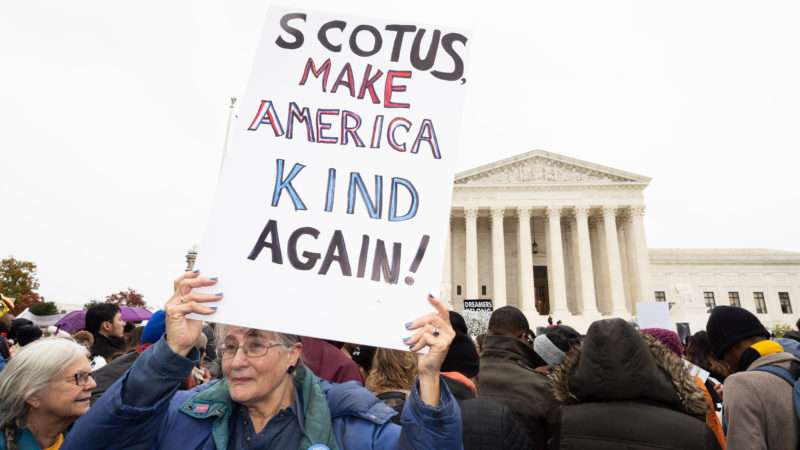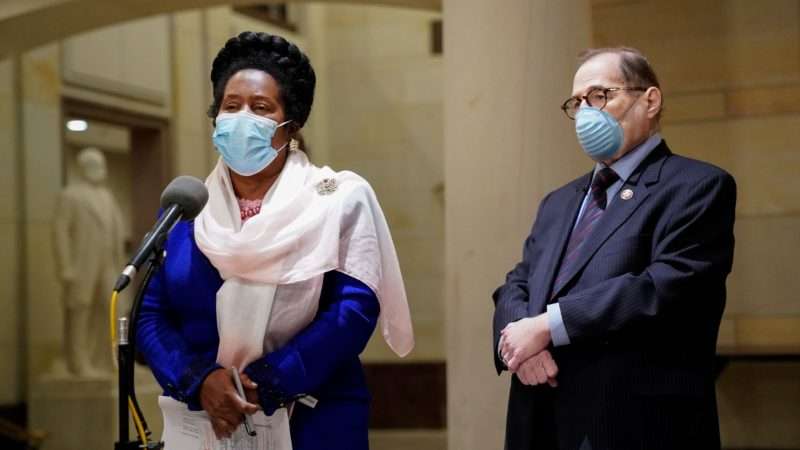However grudgingly, most government officials have come to the realization that many Americans are sincerely concerned about abusive policing practices and the disparate treatment of minority communities by law enforcement. That means we’re seeing competing proposals from lawmakers as they race to get on the right side of the national movement for reform. But not all proposals are equally worthy, or even serious.
The most promising of the proposals so far is the Ending Qualified Immunity Act from Rep. Justin Amash (L-Mich.) and Rep. Ayanna Pressley (D-Mass.). At four pages long, dealing with one subject, and clearly written, the bill is a model piece of legislation.
The bill would abolish qualified immunity, which “protects a government official from lawsuits alleging that the official violated a plaintiff’s rights, only allowing suits where officials violated a ‘clearly established’ statutory or constitutional right,” in the words of Cornell Law School’s Legal Information Institute. It’s a much-abused doctrine that has shielded police from consequences for abusive actions for decades.
The strength of the Ending Qualified Immunity Act could also be its weakness: it deals with one concern, not the host of problems that beset modern policing. There’s nothing in here about civil asset forfeiture, racial bias, militarization, no-knock raids, etc. But that should limit the opportunity for debate and delay; lawmakers either support the one proposed reform in the bill, or they don’t.
The main reform proposal from Democrats is the Justice in Policing Act of 2020, sponsored in the House by Rep. Karen Bass (D-Calif.) and Rep. Jerry Nadler (D-N.Y.), which takes on rather more topics than the Amash-Pressley bill. In 134 pages, it addresses racial profiling, data collection and the tracking of police misconduct, body cameras for law-enforcement officers, no-knock warrants, chokeholds, and the distribution of military equipment to police departments. Going beyond qualified immunity, which applies to state and local cops, the bill also seeks to rein-in use of force by federal officers.
There’s a lot in here to like, such as the core reforms. There’s also quite a bit to argue about, such as dramatically expanding the federal government’s role in ways that may prove counterproductive (more federal funding for policing will inevitably result in more policing). And there’s much to wonder over the fate of, such as a police misconduct registry and extensive data collection that, as years pass, are likely to be as neglected as those never-published excessive-force reports.
If it can win approval, the Justice in Policing Act of 2020 has the potential, on balance, to nudge policing in a healthier direction. But this is far from perfect legislation and it’s easy to envision it stalling in the Senate over disagreements about any of a dozen different proposals.
By contrast, the Republican JUSTICE Act is weaker tea. The bill doesn’t address qualified immunity at all—sponsor Sen. Tim Scott (R-S.C.) called such a provision a “poison pill” for his party. It does make federal funding for police departments conditional on restricting the use of chokeholds, requires the use of body cameras by officers, punishes falsified police reports, and criminalizes cops having sex with prisoners (which, it’s hard to believe, actually has to be addressed). It also (despite much initial sparring over the issue) makes lynching a federal crime just as the Democrats’ bill does.
Most of the GOP bill, though, is about kicking the can down the road. It proposes gathering data on police conduct, requires reports about the use of no-knock warrants, sets record-retention standards, and creates training programs for officers that will, hopefully, eventually improve their conduct. And it would create commissions, apparently to hold lots of meetings to determine if something else should be done in the future.
Take a crack at predicting the fate of those databases, reports, programs, and commissions 10 or 15 years down the line. The JUSTICE Act is less a piece of legislation than it is 106 pages dedicated to establishing new federal approaches to gathering dust.
An important caveat to keep in mind for all proposed policing and justice reforms is that policies passed in the heat of the moment will be interpreted and implemented by government employees long after popular enthusiasm fades. We’ve had reformist moments in the past that were sabotaged by bureaucrats and politicians.
In 1994, the Violent Crime Control and Law Enforcement Act, otherwise a gift to law enforcement agencies, included a section requiring data collection on the use of excessive force by police departments and the publication of annual reports. But “we still don’t know how many of these incidents occur each year … the reports were never issued,” as famed police whistleblower Frank Serpico pointed out in 2015.
“The brutal killing of George Floyd by Minneapolis police has been condemned by former Presidents Bill Clinton, George W. Bush and Barack Obama,” noted USA Today columnist James Bovard recently. “However, police violence spiraled out of control in part because each of those presidents failed to obey a law compelling the feds to track police killings around the nation.”
Ultimately, any programs meant to monitor or limit the government’s enforcement power will be administered by officials not especially committed to such restrictions. Temper your expectations accordingly.
At present, the bar for police reform is set by the Amash-Pressley bill. Given its limited but important focus and the fact that it’s a one-time change that doesn’t have to be administered over the course of years by disinterested or even hostile bureaucrats, the legislation is a no-brainer. Any lawmaker unwilling to support abolishing qualified immunity is not serious about reforming policing.
The Justice in Policing Act of 2020 is probably worthy of passage for its core reforms, even though it could really do with less dedication to subsidizing that which it’s supposedly trying to restrain. The ultimate effectiveness of data-gathering and the misconduct registry will require both continuing public attention and government efficiency—which is to say, don’t place your hopes on those parts of the legislation.
The JUSTICE Act is not seriously in the running unless it gets major revisions. Forget it.
Will any of these bills change the nature of policing in a positive way? Polls find that a clear majority of Americans want to retain police departments as we know them, but with major overhauls to address abuses. Two of these bills offer some hope for just that, which is a start in the right direction.
from Latest – Reason.com https://ift.tt/2UZFgMc
via IFTTT




